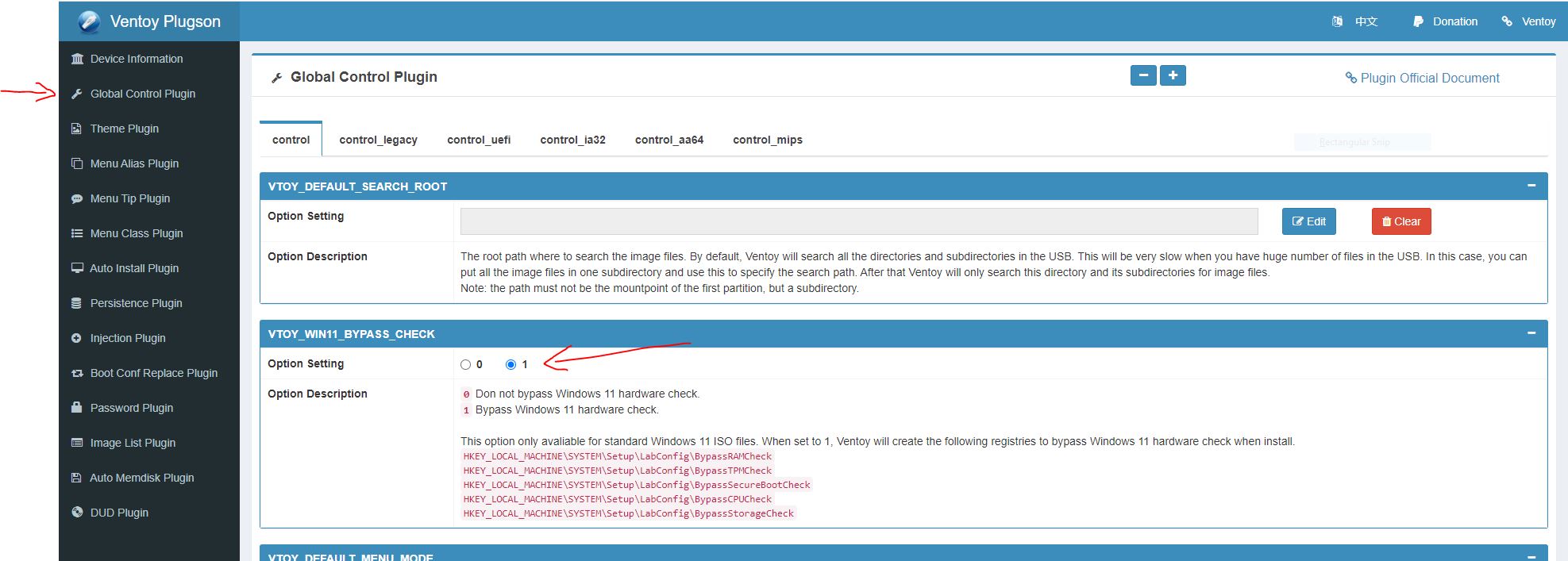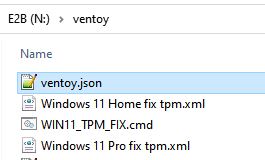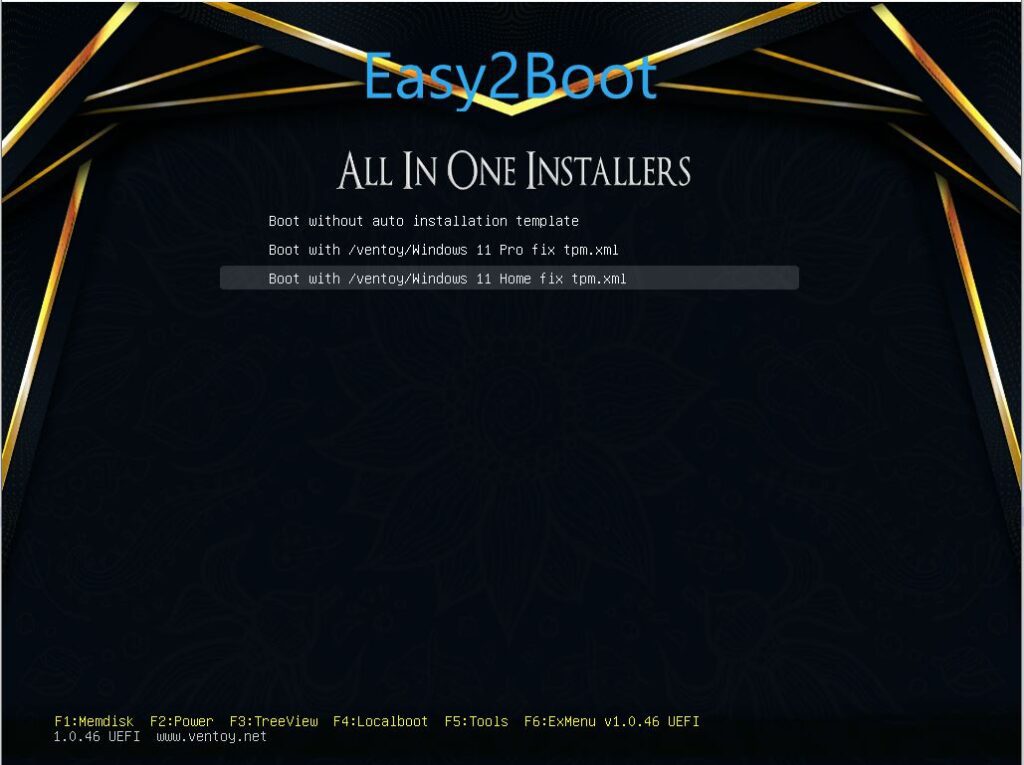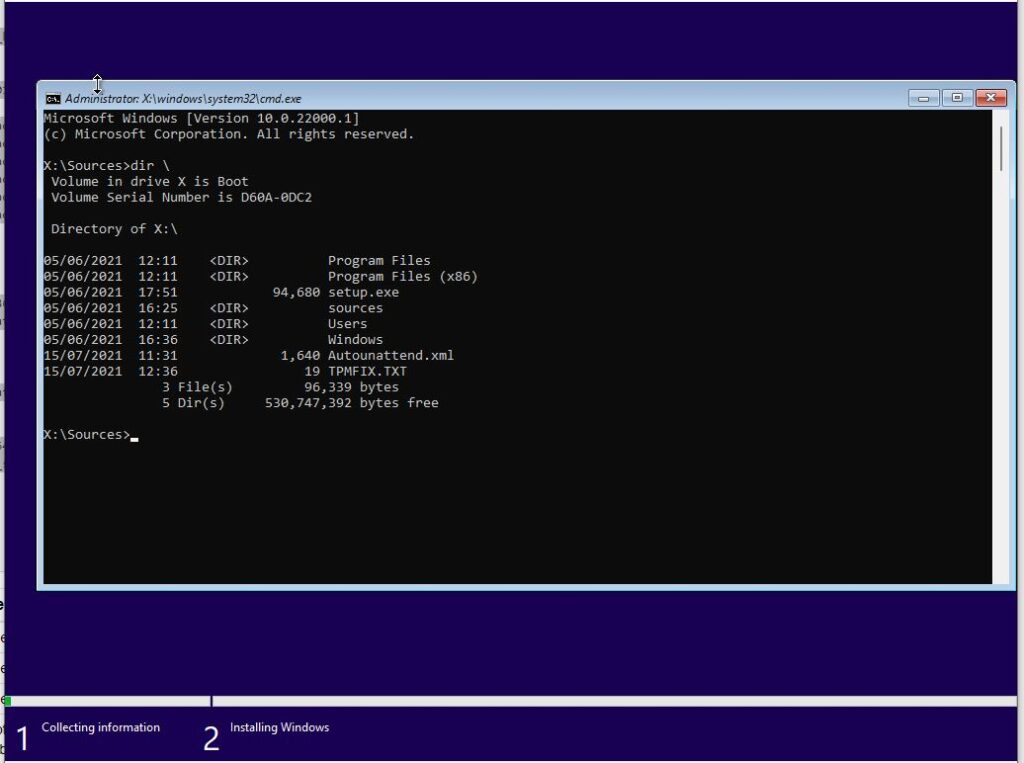If your system has a TPM you can enable it in the BIOS settings of your computer. On some motherboards, it’s called Intel Platform Trusted Technology (PTT). On some AMD motherboards, it is called fTPM. To search for the TPM function, you need to switch to the BIOS / UEFI of your PC or notebook. To do this, restart the computer and immediately press the F2 or DEL key. To use the TPM with Windows 11 you must also enable UEFI and secure Boot.
If your computer has no TPM and you want to install Windows 11, then by using an XML file, we can use Ventoy to boot to a Win11 ISO and bypass the TPM, RAM size and Secure Boot checks. Easy2Boot and agFM can also bypass these checks (see here).
Ventoy Instructions
You can use VentoyPlugsonE2B.exe to add the entry into the ventoy.json file instead if you wish (applies to all Win11 ISOs):

OR you can use an XML file plus a ,cmd file for better control, as detailed below:
Download and copy a Windows 11 ISO file to \_ISO\WINDOWS\WIN11 folder.
1. Create an XML file containing a RunSynchronousCommand entry and a generic Windows 10 or 11 install Product Key for Home or Pro (files included in download)
2. Place the XML file in the \ventoy folder on the E2B NTFS Partition 1 volume of the USB drive
3. Place the file WIN11_TPM_FIX.cmd in the same \ventoy folder (download is at bottom of this page)
4. Create or edit a \ventoy\ventoy.json text file which contains one or more XML file entries for each Win11 ISO you want to use, e.g. see red text below…
"auto_install": [
{
"image": "/_ISO/cn_windows_10.iso",
"template": "/ventoy/script/windows_unattended.cfg"
},
{
"image": "/_ISO/WINDOWS/WIN11/22000.1.210604-1628.CO_RELEASE_CLIENTMULTI_X64FRE_EN-GB_CORE_PRO.ISO",
"template": [
"/ventoy/Windows 11 Pro fix tpm.xml",
"/ventoy/Windows 11 Home fix tpm.xml"
]
},
{
"image": "/_ISO/cn_windows_server_2012_r2_vl_x64_dvd_2979220.iso",
"template": [
"/ventoy/script/windows_unattended1.xml",
"/ventoy/script/windows_unattended2.xml",
"/ventoy/script/windows_unattended3.xml",
"/ventoy/script/windows_unattended4.xml",
"/ventoy/script/windows_unattended5.xml",
"/ventoy/script/windows_unattended6.xml"
]
}
]
5. Now boot to Ventoy (through E2B legacy menu or agFM Legacy\UEFI menu) and select the Windows 11 ISO that you specified in the ventoy.json file.

Ventoy will warn you on first boot if you have a syntax error in the ventoy.json file.
The TPM, RAM and Security bypass registry entries should now be added before Setup starts to run.
You can check that it has worked by looking for a X:\TPMFIX.TXT file (press SHIFT+F10 to get to the WinPE cmd console, type dir \ and then type exit)…

Tip: You can edit the XML file and delete the 5×5 Product Key (only delete the 29-characters of the key, not the <Key></Key> text or any lines). You can then use this XML file to install any Edition that is included within the ISO – however, if the target system includes an OEM UEFI-embedded Product Key (e.g. Dell Win10 Home PC), then Win11 Home will be automatically chosen by Setup. So to force Win11 Pro to install, you need to use an XML file with a generic WIn 10/11 Pro Key (as supplied).